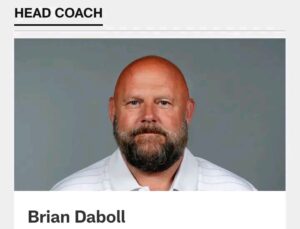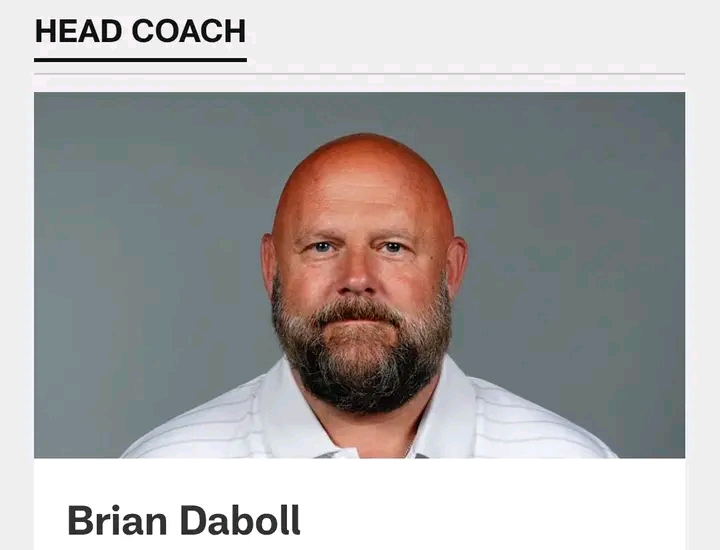SAD SAD SAD: WE Can’t Fire The HC Cause Mike Kafka Is The AHC and He DEFINITELY CAN’T COACH
Shane Bowen The DC CAN’T Do Both. CAN’T Fire The GM That’s Pointless For…Details
The atmosphere surrounding the team has reached a breaking point, with fans, analysts, and even some within the organization openly voicing frustrations about the current state of leadership. The central issue lies in the head coach’s struggles, but the solutions are far from straightforward. The franchise finds itself boxed into a difficult corner, facing an organizational structure that complicates any path forward.
Calls to fire the head coach have grown louder with each passing week, as mounting losses and an offense devoid of rhythm have turned optimism into deep disappointment. Yet, while the desire for change is understandable, the immediate problem lies in the lack of viable alternatives. Normally, firing a head coach midseason would allow an assistant to step in as an interim leader, buying the organization time to reassess and restructure. But in this case, the designated assistant head coach—Mike Kafka—appears to be the wrong man for the role.
Kafka, who has been entrusted with significant responsibility on the staff, has done little to inspire confidence as a potential interim leader. His offensive schemes have faltered, his play-calling has been widely criticized, and his ability to command a locker room remains in doubt. Promoting him to interim head coach would almost certainly lead to further chaos rather than stability, making the option effectively untenable. For a franchise already reeling from inconsistency, that risk is simply too great to take.
Defensive coordinator Shane Bowen has been floated as another potential stand-in, but this too presents complications. Bowen has his hands full managing a defense that, while occasionally resilient, has lacked the consistency to carry the team. Expecting him to shoulder both defensive responsibilities and the head coaching role would be unfair, if not impossible. History shows that splitting duties at this level rarely works, and the added burden would likely damage both sides of the operation. Bowen, though respected, cannot be expected to wear both hats effectively.

That leaves the general manager as the next logical target of criticism. But here, too, the organization faces a dead end. While many of the personnel decisions have drawn scrutiny, firing the GM midseason is rarely a move that pays immediate dividends. The GM’s role is long-term by design—focused on contracts, scouting, and roster construction—making it unlikely that a sudden change at the top would fix what’s happening on the field right now. In other words, replacing the GM would be more symbolic than practical. For a team desperate for stability, symbolic moves won’t do.
This predicament has left ownership paralyzed. Fans want answers. The locker room wants direction. Yet the leadership structure, built to provide checks and balances, has instead trapped the organization in a cycle of frustration. The head coach appears unfit to lead, the assistant head coach is unqualified to replace him, the defensive coordinator cannot reasonably handle dual responsibilities, and firing the general manager would do little more than shift blame. It is the definition of a no-win situation.
The larger question looming over this crisis is how the team reached this point in the first place. The hiring of Mike Kafka as assistant head coach was meant to signal an innovative direction, with fresh offensive ideas that could energize both the roster and fan base. Instead, it has only highlighted his limitations. Meanwhile, Shane Bowen was tasked with revitalizing the defense, but his unit has been too inconsistent to mask the offense’s glaring weaknesses. The GM, for his part, has invested heavily in pieces that have yet to deliver.
The result is a franchise adrift. A once-promising season now teeters on the edge of collapse, and every week seems to compound the frustration. Ownership must weigh whether standing pat is worth the backlash, or if bold moves—even imperfect ones—are necessary to restore credibility. There is no easy answer, but doing nothing risks alienating a fan base already growing restless.
Some analysts suggest the only realistic option is to ride out the season with the current structure and make sweeping changes in the offseason. That would allow ownership time to fully evaluate the coaching staff, front office, and organizational direction without the chaos of midseason disruption. However, this approach comes with its own risks—namely, the risk of losing the locker room entirely. Players who sense leadership instability may lose faith, leading to further on-field struggles.
Others argue that even a flawed interim solution is better than none. Promoting Kafka, despite his struggles, could at least signal accountability and provide a reset in tone. Handing Bowen more authority, even temporarily, might instill defensive toughness that could carry the team through tough stretches. These are imperfect options, but in the NFL, perception often matters as much as results. Showing the public that leadership is willing to act could ease some of the external pressure.
For now, the team trudges forward in limbo. The head coach remains in place, but with little faith behind him. The assistant head coach holds the title but not the trust. The defensive coordinator is stretched thin. The general manager, while technically secure, cannot escape criticism. And ownership faces a pivotal moment that could define not only this season but the trajectory of the franchise for years to come.
What happens next will depend on whether leadership prioritizes short-term stability or long-term vision. One thing, however, is certain: the current situation is unsustainable. The franchise is stuck in a state of paralysis, and without decisive action soon—whether during or after the season—the anger currently boiling among fans and players alike could turn into something far more destructive: apathy.
